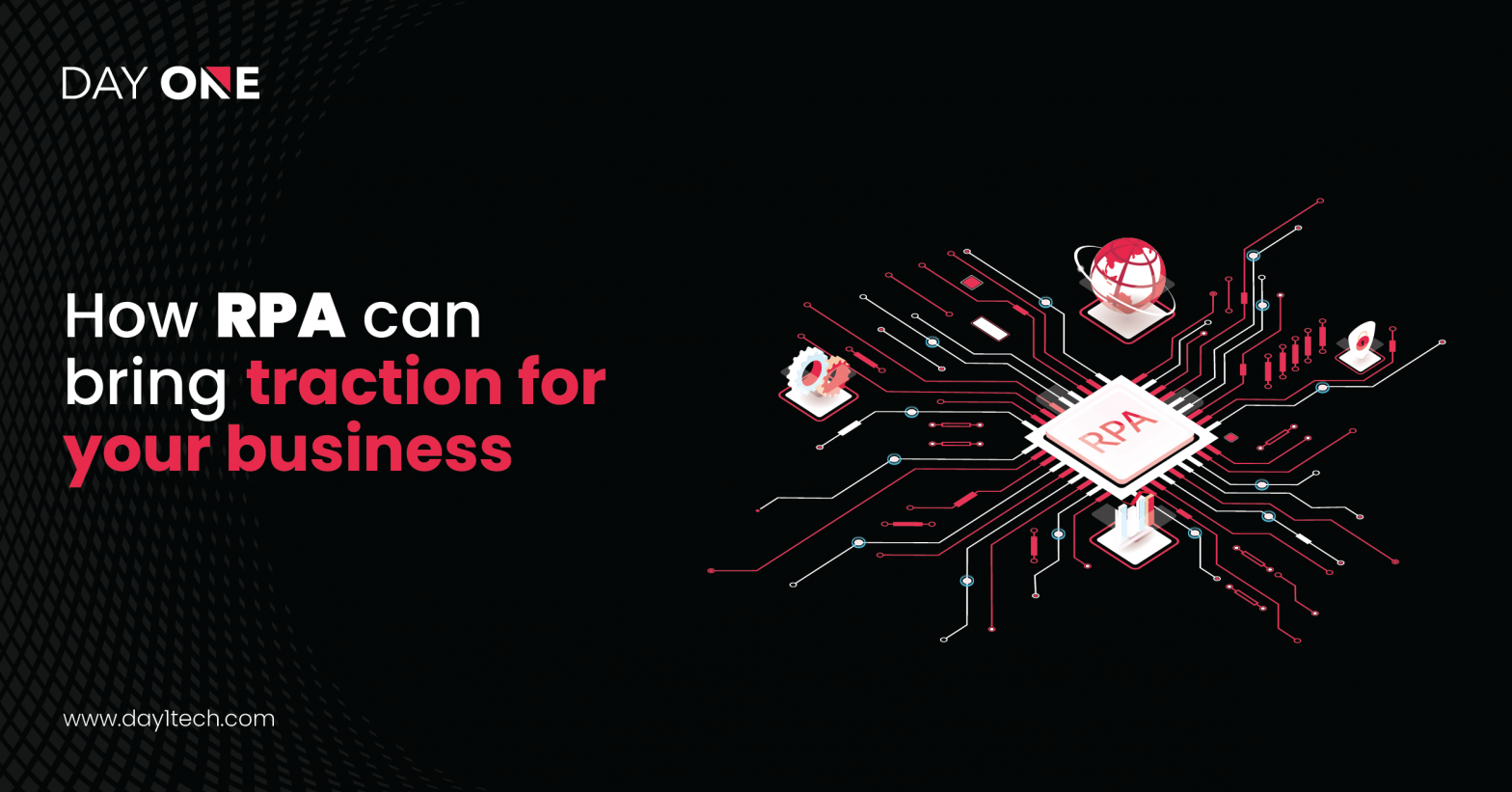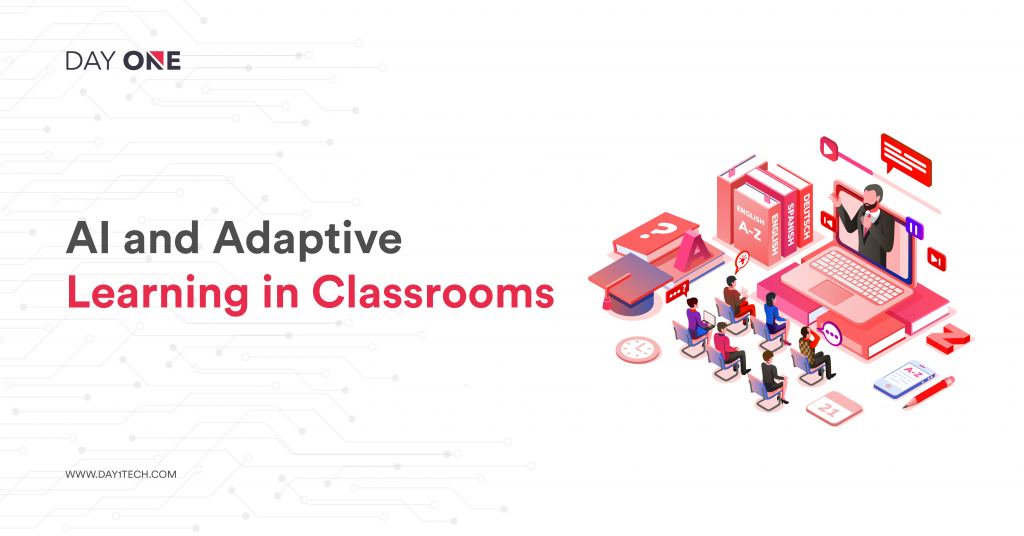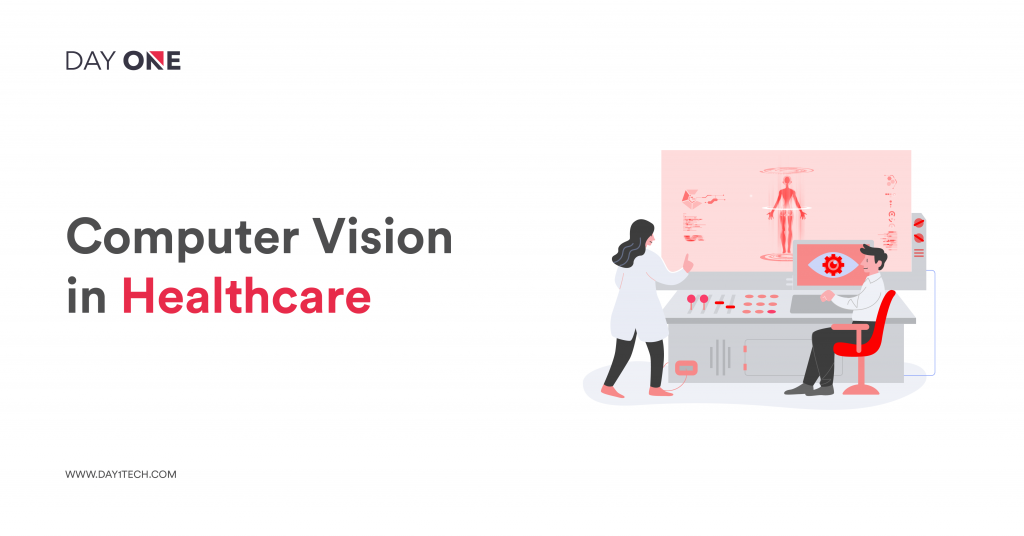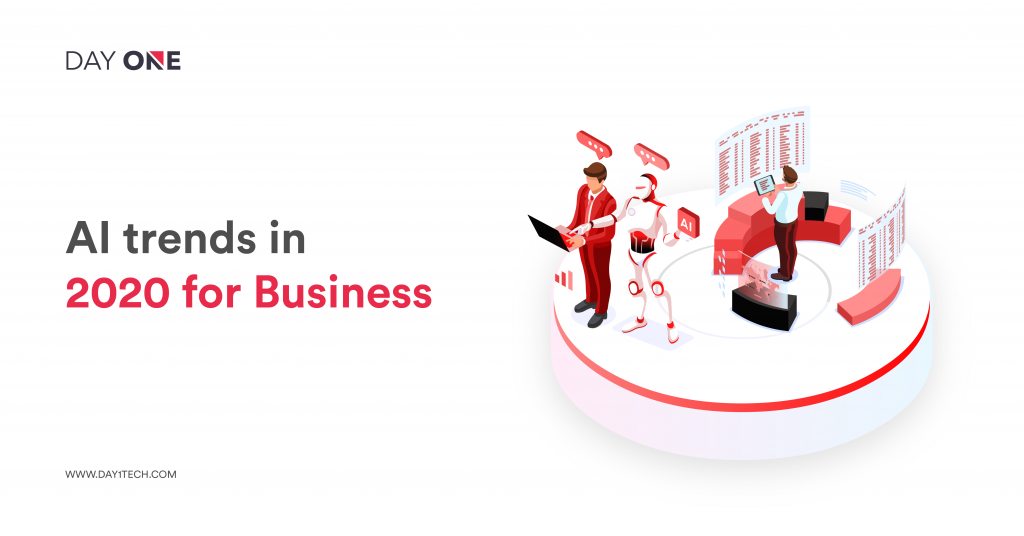How RPA can bring traction for your Business
admin
Artificial Intelligence
July 26, 2021
9 min read

Robotic process automation is a technology that replaces workers with software acting on their behalf. In business, the term Robotic process automation refers to machines and sophisticated technology to automate certain high-volume repetitive tasks or entire processes to improve the quality and Speed of current business operations. “Robotic process automation” (RPA) is a method of automating a process and saving money by reducing labor. RPA is also used to automate the task of answering phone calls and accessing information from the internet. The benefits of robotic process automation (RPA) are numerous. It allows for the continuous improvement of processes. It enables faster processing, giving you more time for your work, leading to a better quality of service.
The benefits of RPA in business:
Optimize resource use: Robotics Process Automation (RPA) is a technology introduced to help streamline current business processes and slash operations and maintenance costs. It is also used in different industries to bring more efficiency, improve customer experience, and deliver better end-user experiences. Optimize is a brand new approach to automated resource planning for computer systems and software that will allow users to define a long-term plan to manage a computer system and software environment. Optimize Resource Usage is a very important and useful task in any Database Management System deployment. Database Management Systems are known to be resource-intensive. Perform all the database management operations. Therefore, a lot of resources are needed. RPA helps to automate database management tasks that are energy-intensive.
Introduce adaptability and flexibility to processes: Flexibility and adaptability in an organization are critical to achieving its goals. The first one, adaptability, is all about being flexible with your processes. If you plan to grow your business or generally expand your business, it is important to adapt your processes to accommodate these changes. In addition, it is important to maintain adaptability and flexibility when making decisions based on the processes and procedures we follow in our workplace. Introducing adaptability and flexibility to processes can help you improve your business. They help to increase efficiency, eliminate human error, and optimize processes for more accurate completion.
Aim for cost-effectiveness: RPA is a technology that allows the software to interact with business processes – robotics and automation. It enables companies to complete tasks faster, more accurately, and more consistently and accurately than before. RPA is generally regarded as a low-cost, high-impact technology that helps businesses become more competitive and efficient by automating repetitive tasks. RPA can enable businesses to deliver better customer service, improve operational efficiency, reduce costs, and quickly respond to changes in the business environment by automating routine and infrequent tasks.
Improve communication: Communication is the exchange of thoughts, ideas, and messages between people. If you want to improve your communication with your customers, you need to automate it. If you want to automate your communication with your customers, you need to use RPA or Robotic Process Automation.
Automated responses and triggers are the next big thing in business today. They’re already being used to save time and money by reducing repetitive human tasks inside the enterprise. These automated responses and triggers work at the level of individuals, through email scripts, or by using AI to make decisions at the device level.
Discover automated responses and triggers: Automated responses and triggers are two very different but often used interchangeably. Automated responses are the responses that system users are prompted to make, whether they perform an action or interact with a system. These are usually programmed responses that are triggered by certain events. For example, think of a system that emails users when a particular form is submitted to them. This system will only respond when a user submits the form, regardless of the content that is on the form. On the other hand, a trigger is simply a mechanism set up to send a certain event or action to a system.
Implement RPA hassle-free: RPA is a technology that automates repetitive processes with no human intervention. It is a way to replace employees and reduce costs digitally. Not only does RPA save a company money, but it also provides them with a more efficient workforce. RPA helps companies become more efficient, faster to market, and capture market opportunities by automating business processes that are traditionally manual and require a lot of supervision.
Empower the workforce: Empower is a business process automation solution that helps organizations improve their performance, productivity, and bottom line. It automates tasks to help teams be more productive and help companies grow and scale. Efficient workflows and robotic process automation are used to increase the productivity of a business. The step to building a robot is to develop a strategy that prioritizes the processes required for each business. The process management application then identifies and automates the processes, using machine learning technology to improve the quality of the outputs.
Analytics and digital transformation. Insights and Analytics: Analytics is a critical part of any business’s digital transformation. It provides the intelligence to allow for insight. Businesses can measure the performance of their products, reduce costs and increase revenues, and thereby increase productivity. Analytics also help businesses identify areas of growth, as well as the potential for customer experience problems.
Error-free operations: With the rise of robotics and the industrial internet of things using automation software, it is important to understand and utilize automation processes that remain error-free. There is a common demand for small to medium-sized businesses in the modern workplace to periodically schedule and execute production processes in a reliable and optimized manner. Automation plays a crucial role in the success of many industrial processes. Automation is used to increase efficiency and reduce the cost of production systems.
Application of RPA:
Healthcare: Healthcare is very important for any person, but developing a user-friendly system is a challenge. For example, it is expected to completely replace the need for clinicians to sift through a pile of patient records to determine eligibility for services and, in most cases, automate the filling with claims. On the other hand, healthcare has high requirements for safety and efficiency, and robots are a great way to make a healthcare system much more reliable.
Customer services: The worldwide digitization trend of customer services has significantly impacted modern business practices. Services like online banking and insurance have seen significant growth in the use of RPA. Customer support has become a competitive advantage for companies that have successfully embraced automation. RPA can help customer service agents reduce the amount of time they spend on repetitive tasks while also improving the quality and efficiency of their work.
Banking: A bank’s main goal is to maintain its customer’s trust and create a positive customer experience. Bankers need to be proactive to improve customer experience. To achieve this goal, banks use robotic process automation to improve efficiency and improve customer satisfaction.
RPA Development Process:
Strategic Planning Skills: A strategic planning process involves designing and implementing the long-term planning, processes, and systems organizations use to maximize their performance and efficiency. Strategic planning is a strategy used in the business world to help inform the future decisions of a company. To implement and execute these plans, the company must have the right people and the right tools to help them be successful. In addition, it requires a deep understanding of the various resources available to your organization and in-depth knowledge of the many aspects of your business.
Strong Analytical Skills: Strong analytical skills are required to make well-informed decisions based on logical reasoning to solve complex problems. Understanding the data within the overall problem and making the logical connections required to decide is important for any person. Strong analytical skills are an essential part of being a business leader, and they are the basis of the skills that any good business manager should have. These skills can be divided into the following categories: Analytical skills – these are deducing the solution. These skills are needed for problem-solving and logical thinking; communication skills are the process of communicating with other people involved in the project. Logical thinking skills – are thinking logically.
Problem Solving Skills: Problem-solving skills are very important for working with robots and robots themselves. It is the unique skills that people need to handle certain things. These skills are important because they help people in their work. The tasks are given to them by their organization or any person depending on the person’s skills. Without having these skills, it would be hard to do any work because it would not be possible to complete any tasks. It takes a certain amount of skills to be good at problem-solving, and it is highly recommended that every software developer train themselves for problem-solving skills.
Implementation of RPA:
List out Processes To Automate: RPA (Robotic Process Automation) is a powerful tool to accelerate organizations into a new era of automation. List out the processes to automate Collecting data, Extracting Data, Cleaning the Data, Correlating the Data, Creating reports, Modifying Data, Modifying the Application. This technology can revolutionize industries by automating business processes, and RPA implementation can be long and tedious. It requires finding the right Teams and resources, managing the process, and then identifying the obstacles. Processes that are easier to perform are often taken for granted and are usually well integrated into the existing work environment.
Perform Feasibility Assessment: Feasibility assessment is a method of predicting the likelihood of completing a project successfully. It is used to determine the feasibility of a project, which directly influences the risk associated with the project and the likelihood that the project completed successfully. Performance assessment is a management technique used to evaluate a system’s performance by measuring its process data. This data can be measured in terms of the number of operations, the time taken for processing an operation, the number of errors or exceptions that occur, the size of the data objects that are stored in the system, and the number of data records that are stored in the system.
Readjust: Readjusting is a critical part of planning and executing RPA implementations. Readjusting is a process of re-evaluating various positions’ roles and responsibilities and then determining those roles and responsibilities that best suit the current business environment. It is the process of making major changes within an organization to accommodate and align with the principles of RPA.
Gather User Stories: User stories are a well-known idea to describe a customer’s behavior or application functionality. Gather user stories form a critical part of any process of developing a new RPA implementation. It helps organizations in making the right decision to choose the right process. Not only do they help you get a better grasp of the business requirements, but they also give you a chance to define the process you will need to implement.
Start Development Process: The start development process is the step in the process of implementing RPA.It will help RPA system development teams plan, start, build, and manage RPA system development processes. Advantages of the start development process are Speed of implementation, cost of implementation, software security, and software control.
Test RPA Process: Test RPA is the first step to implementing RPA. It is the process where a User clicks and tries to gain access to the Application. When the user tries to access the Application, the automated Application will handle the request by following the next steps. Therefore, test RPA is a critical step in RPA implementation.
Reconfirm and Deploy: Reconfirm and Deploy is a process, a set of activities that will help you ensure your technology solution is working properly. In addition, it will help you identify risks and opportunities, and you can use it to test your system during an up-front deployment.
RPA Bots
A robotic process automation Bot is a software program that automates some tasks for a business. Robots are designed to work by executing a set of instructions to perform a set of tasks. They can work on multiple platforms and are usually coded in C++, Python, Java, or C#. The bot will usually give the user-supplied data to the bot to act upon. Many bots are also programmed to work in conjunction with other bots, known as bot networks.
Data entry bots: The data entry bot is an AI tool that utilizes web services, algorithms, and visual search to automate data entry processes that are tedious, repetitive, and error-prone. Data entry bots, also known as bot builders, and then automate the work by completing tasks. You can use bots to streamline your work, schedule your to-do list, or even complete tedious tasks that would otherwise take hours or days. It is a great way to reduce the manual work in the data entry processes. They are also used for data analysis, data correction, data management, data cleansing, data cleanup, and data extraction.
Validation & verification bots: A validation and verification bot is a highly automated and intelligent tool that performs a predetermined set of steps to implement a specific task and work in batch, parallel, or distributed modes. These bots are useful for automating repetitive tasks that humans are used to performing. In the world of RPA, there are two increasingly important parts: the first is validation and verification. Validation and verification is the process of testing, verifying, and validating the integrity of your code. Validation is testing to make sure the code is working as expected and is not broken. Verification is checking the code to ensure it is correct and the expected behavior is happening. They are used to automatically identify and eliminate any mistakes in the documentation and validate the accuracy of a classification system, data quality, a model, or other aspects of a solution.
System integration bots: System integration bots automate the integration and synchronization of data into existing applications and help to integrate data from various systems automatically. It is a repetitive task required in a system, such as a cloud provisioning service or a monitoring service. These bots use a combination of APIs, libraries, programming languages, and other technologies to automate the tasks needed to make the system work. They help you automate a task or set of tasks, reduce downtime, and improve your business. In addition, they help businesses monitor and manage the systems in their environment and automate the various tasks required to improve productivity, efficiency, and security.
Schedule/trigger bots: Scheduling and Triggering are among the most popular features in any robot-process automation system. A schedule/trigger bot is a type of software that can automate tasks and help save time. Schedule/trigger bots are created by programming various tasks to execute them at specific times, and they help you automate repetitive tasks that you often need to run in the same sequence. And finally, they can help you automate a task that is not a one-off thing but needs to be done regularly for business purposes.
Conclusion: Robotic process automation (RPA) is a new way of automating business processes by giving computers the power to perform tasks on behalf of humans. Automation is a powerful technology that can make our lives easier, safer, and more efficient. The benefits of using robots in business include: fast time to market, cost savings, reduced risk, increased reliability, quality, improved productivity, and increased job satisfaction.
Explore More Blogs
Testimonials What customers have to talk about us
Finch (previously Trio) – Growth with Investing, with benefits of Checking
Reading Time: < 1 minThe Finch (previously Trio), one of our clients today has reached this level with our expertise and with a great team of developers in Day One, who have made every stone unturned in making this project a big success.
Neel Ganu Founder
USA
Vere360 – VR based Immersive Learning
Reading Time: < 1 minDay One helped Vere360 “fill skill gaps” and build a platform that would cater to their niche and diverse audience while seamlessly integrate the best of #AI and #VR technology.
Ms. Adila Sayyed Co-Founder
Singapore
1TAM – Video Blogging Reimagined
Reading Time: < 1 min‘1TAM’ was only for iOS with gesture-based controls, advanced video compression techniques, and a simple architecture that allowed actions to be completed in 2-3 taps. The real challenge for ‘1TAM’ was to keep it distinct which bought brilliant results with all the strategies and approaches implied for best video compression techniques.
Anwar Nusseibeh Founder
UAE
Fit For Work – The Science of Workplace Ergonomics
Reading Time: < 1 minDay One Technologies came with the expertise that was required and helped in building a platform that is edgy, functional, and smart, delivering engagement and conversions at every step.
Ms. Georgina Hannigan Founder
Singapore
SOS Method Meditation for ‘Busy Minds’
Reading Time: < 1 minDay One Technologies helped in building an innovative mobile app (for #iOS and #Android) that’s easy-to-use, engaging, and data-driven to help users reap the most at every point.






